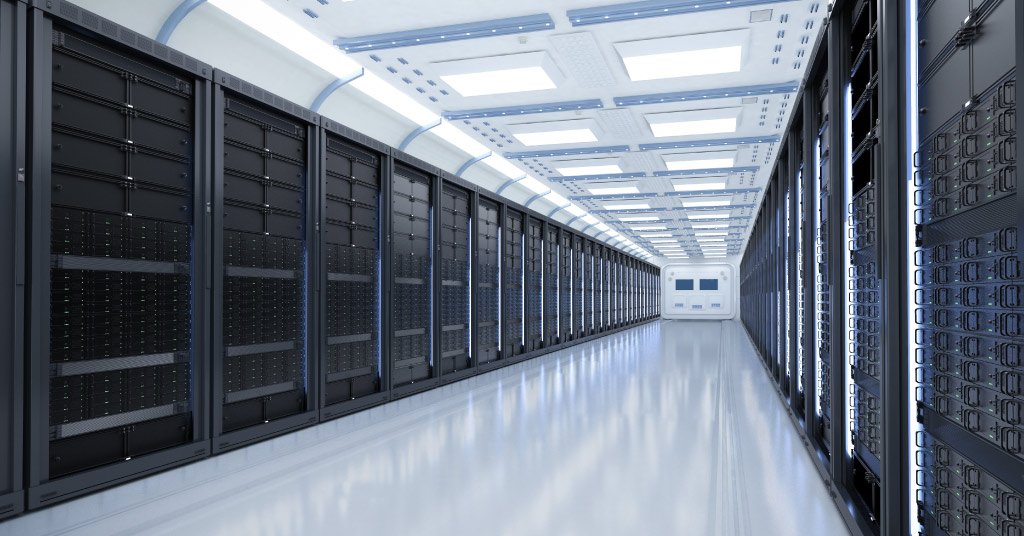As you begin to grow your business, the requirement for a capable and scalable data center cloud architecture increases exponentially. As a result, many businesses have begun exploring cloud-based applications and introducing cloud-related products into their workflow. Also, as a result, the global cloud computing market growth is pegged at 19% CAGR at $1,251.09 billion by 2028.
Although the global need for cloud-based infrastructure is on the rise, most firms have a tough time estimating the cost of data center ownership. So we decided to uncover the actual cost of ownership and highlight seven things you should consider before buying or building one.
Understanding the Boom of the Data Center Industry

Before we begin calculating figures, we must understand the boom in the data center industry. This understanding helps us put the scale and scope of investments made in the industry.
For example, according to the Uptime Institute’s 2021 Data Center Industry survey, nearly one-third of suppliers expected a majority of their customers would own data centers within five years.
The survey participants also anticipated that edge computing demand would increase exponentially in 2022. Over one-fourth—26% of the surveyed—expected the data center cloud architecture demand would grow significantly, compared to just 18% in 2020.
With that level of growth, there are a lot of advantages and disadvantages that come with it.
On the plus side, you can expect constant support and improvement from software developers, and hardware manufacturers that aid and improve your business’s capabilities.
While on the negative, hardware and talent will be in high demand, meaning you’ll have to shell out more to acquire and maintain your infrastructure.
Check out the top five design trends in data centers you need to look out for here.
Should you buy or build your data center?
Getting to the heart of the matter, let us consider the average cost of building a data center vs. buying/colocating (colo) one. We have classified the data centers into four tiers and are rated according to their power draw to keep our estimate simple.
First, let’s tackle building a data center. Let’s consider our hypothetical data center as a 16 rack, 500 Sq.ft, tier-one, 0.5MW micro data center.
The cost for the setup is as follows:
-
Cost of UPS capacity for I.T. – $11,500/kW
-
16 racks of server hardware with 5.0kW/rack
-
The “Server room” is $300/Sq. ft. of the computer floor is part of the “kW cost.”
-
The “Unused Space” is part of the “kW cost” at $190/sq. ft.
The tier I facility with 16 racks at 5.0 kW/rack (50 kW of UPS backup) @ 5.0kW/rack. (500 sq. ft. X $300/sq. ft.) + (50 kW x $11,500/kW) = $725,000.
And add another $750,000 for materials, construction, labor, security, staffing, power, cooling, maintenance, and you have yourself a general estimate of your very own data center.
The equation is simple if you decide to buy/colo your data center.
A provider works out a plan depending upon your requirements and conditions and provides an assessment to help you take action to set up a migration plan for your I.T. estate.
It costs much less to buy/colo than to build a data center from the ground up by a fair margin, but it isn’t to say that constructing your own data center is without its merits.
Check out why colocation data centers are increasing in popularity here.

6 Things to Consider Before Building a Data Center
Now that we understand the expenses involved in building or buying a data center, let us look at seven crucial things that a business must consider before investing in a data center:
1. What’s the networking and latency cost?
If you choose to build your data center, networking costs are an area that requires careful planning as they can be massive overheads. Therefore, it makes sense to efficiently plan your data center cloud architecture to make the most out of your investment. Latency is also an often-overlooked factor that requires special attention and impacts your business in the long run.
2. How would you manage compliance and security?
Data security and compliance are hot-button topics in our modern world. According to a report by IBM, the annual average data breach costs rose from USD 3.86 million to 4.24 million in 2021.
Whether you build or buy your data center, compliance and security are two main areas that you can’t compromise.
You would need to conduct routine audits to make your infrastructure compliant with ISO, PCI-DSS, HIPAA, and other compliance regulators. This process ensures that your data and infrastructure use the best practices to ensure safe and smooth operation compliance with data security and privacy laws.
3. What is the cost of 100% uptime?
Maintaining 100% uptime is a critical aspect for many businesses. Accessibility ensures fewer disruptions to your firm and increases your brand’s market trust. All data centers are categorized into four tiers from 99.671% to 99.995% availability.
While many data centers aim to have 100% uptime, it’s no secret that it is a challenging and expensive ordeal to achieve. Furthermore, the closer you get to that 100%, the more you need to spend on your infrastructure and maintenance process flow.
4. What is the cost of downtime?
On the flip side, downtime is unavoidable in our ever-evolving technological landscape; however, understanding the cost beforehand can allow you to plan ahead and considerably reduce the chances of significant losses to your business.
The average cost of server downtime, according to Gartner, is $5,600 per minute and goes up to $300,000 with larger businesses. Depending upon your business sector, businesses can plan downtimes strategically to minimize disruptions and allow proper infrastructure maintenance. Ultimately, it is a balancing act that is unique to every business.
5. How flexible is your industry?
When it comes to data center cloud architecture, there is a broad spectrum of possibilities depending upon your industry of operation. Although there are many regulations in some sectors, such as finance and medicine, businesses need to keep them in mind.
Whether you are building a private data center or picking a color for your data center, it’s best to understand how flexible your industry is to chart your internal policies and process flow to stay compliant and efficient.
6. How do you tackle scaling?
Finally, businesses should prominently consider scalability. This factor is especially vital if you plan on building a data center, as it may significantly hinder growth if not considered.
Scaling in data centers is a multi-faceted process that takes multiple factors such as space, hardware, colling, power, and backup into account. Growth is inevitable for any successful business, and adequate planning is essential to scale your IT capacity as your business grows.
Learn more on the widely used codes and standards for data center design and infrastructure here.
There is no one size fits all solution to the question of building vs. buying a data center. Every business has unique needs, and both these approaches have their pros and cons; we hope that with this piece, you will be able to make a decision that’s right for your business.
While you’re here, check out our five most common power design mistakes you need to avoid with your data center here.
Need help designing and planning your data center from scratch or renovating an existing one? Mechartes offers industry-leading data center engineering consultation for CFD analysis, piping stress and support design, and everything in between. Contact us today.


 Share
Share  facebook
facebook